At the University of Utah, sharps injuries, such as needlesticks and cuts with sharp objects, are among the most commonly reported injuries in research and clinical settings: about 60 per year. Sharps are devices, such as needles, scalpels, lancets, Pasteur pipettes, razor blades, broken glassware and contaminated glass slides and cover slips. The CDC estimates that 62–88% of sharps injuries can be prevented by the use of safer sharps. The University of Utah and the OSHA Bloodborne Pathogens Standard require the use of safer sharps devices whenever possible.
Individuals working with sharps should take necessary precautions to prevent injury and exposure to biological, chemical and other potentially hazardous agents. We recommend that researchers prepare to work with sharps by doing the following:
- Eliminate sharps from procedures or substitute for safer sharps devices as appropriate. For example:
- Replace glassware with plasticware
- Use Safety-Engineered Sharps, such as self-sheathing or retractable needles or scalpels
- Use Luer Lock needles and syringes
- Use bluntneedles
- Use tissue scissors to cut tissue rather than a razor blade for more control.
- Use a plastic gel cutter instead of a razor blade to cut electrophoresis gels
- Develop written procedures to handle sharps safely, including:
- Steps to perform the procedure safely
- Tools and instruments that are needed to perform the procedure safely
- Personal protective equipment
- Steps for responding to an accident, exposure or injury
- Train all staff working with sharps. Information will also be provided during EHS classes
- Dispose of sharps properly.
- Prepare for exposure and spill response.
During all procedures involving sharps, awareness of your surroundings and careful action is required to avoid accidents and injuries. Best practice is to announce that sharps are in use when others are present. Always wear the appropriate personal protective equipment (PPE) and follow all written procedures.
In addition, keep in mind the following safety tips:
- Safe handling of needles
Avoid recapping needles, if possible.
However, if recapping must be done:- Receive permission from your PI and training from EHS Biosafety
- Use one of the following methods:1) one handed scoop technique (shown on the figure), or 2) forceps or tongs to place the cap on the needles, or 3) Use a tool or an engineered device such as a needle holder or recapper (such as the Delasco Recapper and Syringe Holder).
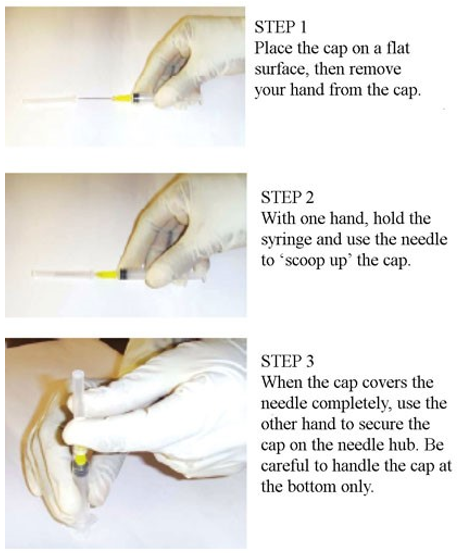
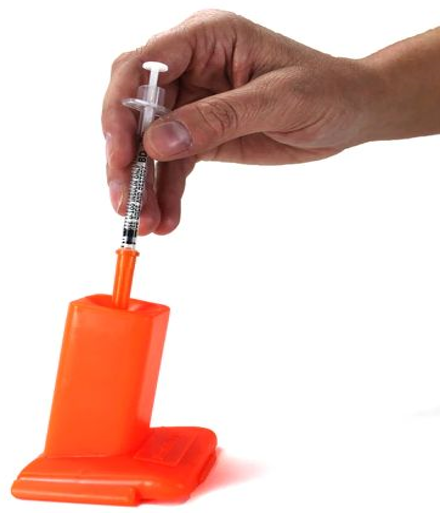
Images source: Cornell University (left) and University of Washington (right)
-
- Alternatives to Recapping - Rather than recapping the needle, place it in a clean conical tube if it needs to be set it down.
- Dispose of uncapped needles immediately after use. Never leave an uncapped needle laying on a workbench.
- Point the needle away from yourself.
- Keep visual contact with the needle at all times while uncapped.
2. Safe handling of blades and scalpels

Forceps/hemostat

Razor blades stored on a magnetic strip
Image Source: University of Washington
- Use disposable safety scalpels with a fixed blade and a retractable sheath when possible.
- Don’t use excessive force or a sawing motion when using a scalpel.
- Don’t use your fingers to hold a razor blade. Use blade with a handle, or use pliers to place the razor blade in a holder.
- Don’t leave razor blades on a bench or in a place that someone may cut themselves. Dispose immediately or store safely, such as on a shelf/wall mounted magnetic strip, in an old polystyrene tube rack, or in the lid on an old pipette tip box.
- Don’t cut or trim an object you are holding with your other hand. Use forceps or another tool to hold an object while cutting.
- Sharp tissue scissors provide more control than a razor blade for cutting tissue.
- Purchase safety cutters to open boxes.
- Don’t use a razor blade to cut smaller strips of tape from a larger roll. Order the appropriately sized tape.
- Don’t get distracted and rush though the task.
- Place reusable sharps in a reusable sharps container immediately after use.
Keep a sharps container near your work station and immediately dispose of sharps after the procedure.
- Needles should never be laid uncapped on a workbench.
- Sharps that retract after use should be disposed of like all other sharps.
Never fill a sharps container more than two-thirds full. Close the sharps container and request a Waste pickup in the EHS Safety Administrative System (SAM)

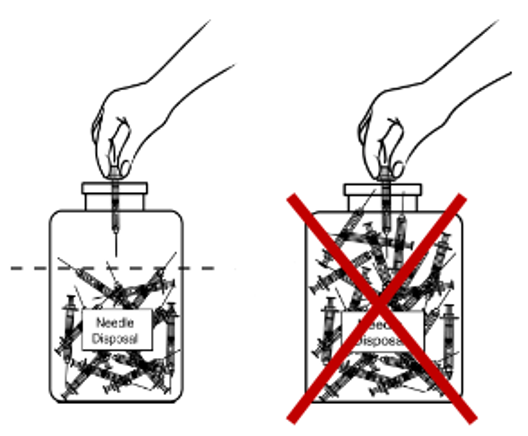
Images source: Outagamie and Winnebago counties and University of Washington (left) and Princeton University (right)
Overfilling a sharps container presents hazards to those using it, and to those collecting the containers for disposal.
- Do not clean up spills or broken glass with your hands - Handle broken glass or other sharps with a secondary device such as forceps, crucible tongs, pieces of cardboard, or broom and dustpan- not your hands
- Do not guess – If you are unsure contact EHS to determine if your sharps waste should be disposed of as a biohazard, a chemical hazard, or in a broken glass bin.
- Do not bag it – Never place sharp objects in a bag, which can poke through and cause leaks or poke someone.
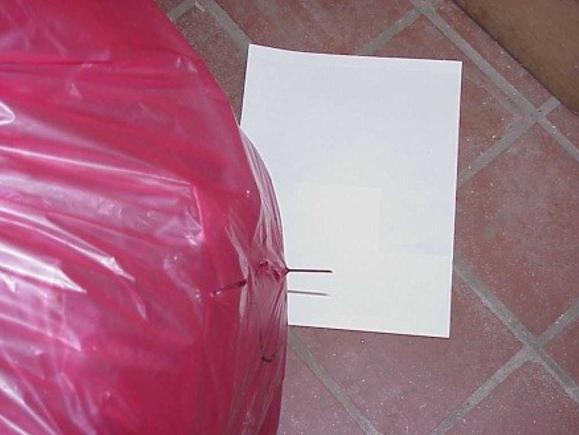
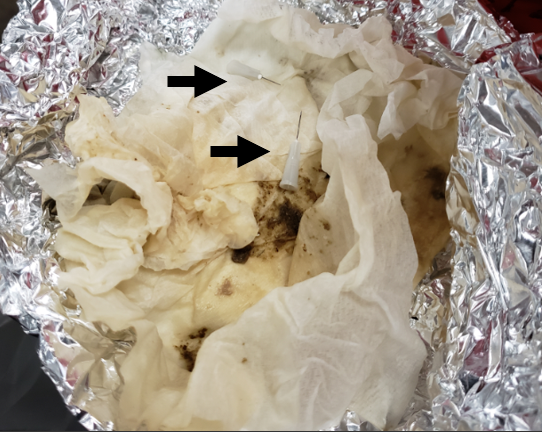
Images Source: Cornell University (left) and University of Utah (right)
Needles were disposed incorrectly and in one case resulted in the injury of a custodian who was handling the waste
- Call 9-1-1 for a life-threatening injury or emergency.
- Follow the instructions in the laboratory Exposure Control Plan, Biosafety Manual and/or Chemical Hygiene Plan (loaded in SAM).
- Wash to site of exposure with soap and water for at least 20 seconds
- Seek Medical Assistance at the RedMed Clinic for any injuries.
- Report the incident to EHS and your supervisor within 24 hours (as soon as possible if a serious or fatal accident occurs).
- For an exposure to Biohazardous materials complete the lab Sharps Injury Log and contact the Biosafety Office at Biosafety@EHS.Utah.edu. When completing the Sharps Injury Log, record the type of sharp involved.
Adapted from University of Washington and Cornell University guidance.
